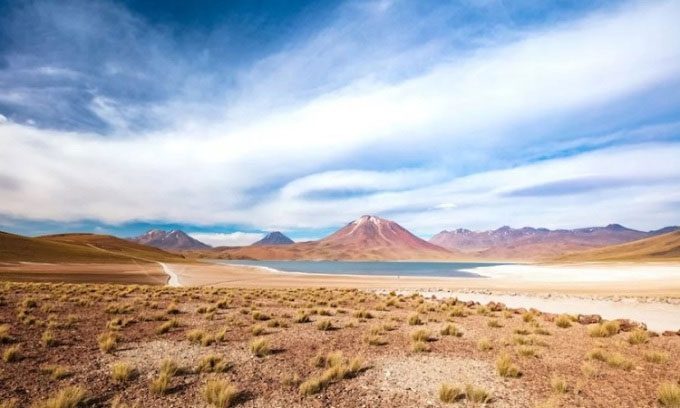Scientists Identify a Plateau in the Atacama Desert of Chile Receiving Sunlight Comparable to Venus.
The sunniest place on Earth is the Altiplano in the Atacama Desert, a barren plateau near the Andes Mountains in Chile that receives as much sunlight as Venus. Although it is typically cold and dry, this sun-drenched land at an elevation of 4,000 meters receives more sunlight than areas closer to the equator or at higher elevations, according to a study published in the Bulletin of the American Meteorological Society, Live Science reported on July 21.

The Altiplano Plateau in the Atacama Desert. (Photo: Pawel Toczynski).
The Atacama Desert is remarkable for many reasons. It is the oldest desert on Earth, the driest outside of polar regions, and possibly the clearest place for observing the night sky. The Altiplano in Chile is also notable for its solar radiation, the amount of light energy emitted from the sun that reaches Earth. Scientists have recorded a world record level on this plateau of 2,177 watts/m2. In comparison, the radiation at the uppermost layer of Earth’s atmosphere is about 1,360 watts/m2.
“That’s really the amount of radiation you would receive in the summer if you were standing on Venus,” said Raul Cordero, the lead researcher and climate scientist at the University of Groningen in the Netherlands.
This comparison is noteworthy as Venus is 28% closer to the sun than Earth. The average solar radiation on the plateau is 308 watts/m2, another world record that is double that found in Central Europe and the eastern United States.
“As solar radiation passes through the atmosphere, it is absorbed by water vapor and scattered by clouds and aerosols,” said Seiji Kato, an atmospheric scientist at NASA. “However, locations at elevations above the water vapor layer, with fewer clouds and aerosols, will receive more sunlight.”
Another reason why Chile is so warm is its geographical location in the Southern Hemisphere. This is particularly true in the summer when Earth’s orbit is closer to the sun, resulting in a spike in radiation levels, which are 7% higher than in the Northern Hemisphere. While satellite data indicate that this is the sunniest region in the world, the new study helps reconfirm and explain the reasons behind such high radiation levels.




















































